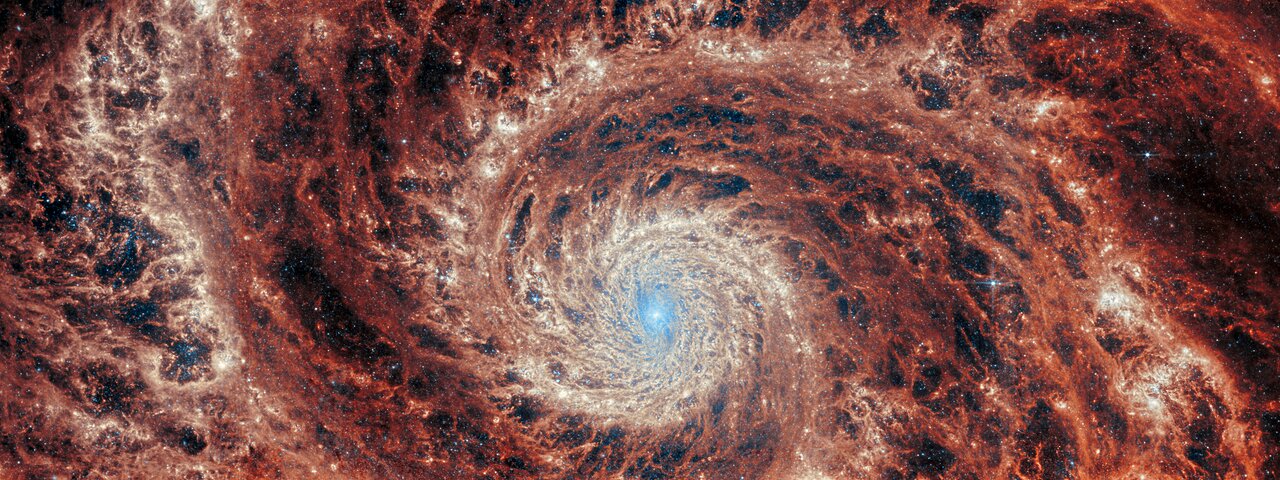Cosmos M51
The graceful winding arms of the grand-design spiral galaxy M51 stretch across this image from the NASA/ESA/CSA James Webb Space Telescope. Unlike the menagerie of weird and wonderful spiral galaxies with ragged or disrupted spiral arms, grand-design spiral galaxies boast prominent, well-developed spiral arms like the ones showcased in this image. This galactic portrait was captured by Webb’s Mid-InfraRed Instrument (MIRI).
In this image the reprocessed stellar light by dust grains and molecules in the medium of the galaxy illuminate a dramatic filamentary medium. Empty cavities and bright filaments alternate and give the impression of ripples propagating from the spiral arms. The yellow compact regions indicate the newly formed star clusters in the galaxy.
M51 — also known as NGC 5194 — lies about 27 million light-years away from Earth in the constellation Canes Venatici, and is trapped in a tumultuous relationship with its near neighbour, the dwarf galaxy NGC 5195. The interaction between these two galaxies has made these galactic neighbours one of the better-studied galaxy pairs in the night sky. The gravitational influence of M51’s smaller companion is thought to be partially responsible for the stately nature of the galaxy’s prominent and distinct spiral arms. If you would like to learn more about this squabbling pair of galactic neighbours, you can explore earlier observations of M51 by the NASA/ESA Hubble Space Telescope here.
This Webb observation of M51 is one of a series of observations collectively titled Feedback in Emerging extrAgalactic Star clusTers, or FEAST. The FEAST observations were designed to shed light on the interplay between stellar feedback and star formation in environments outside of our own galaxy, the Milky Way. Stellar feedback is the term used to describe the outpouring of energy from stars into the environments which form them, and is a crucial process in determining the rates at which stars form. Understanding stellar feedback is vital to building accurate universal models of star formation.
